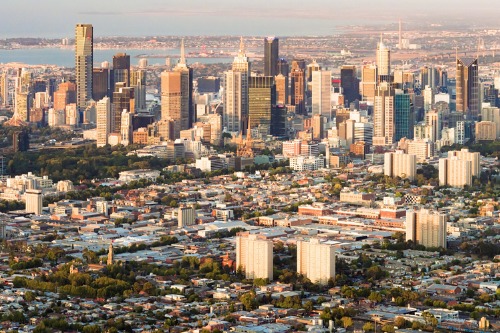

Property values in regional areas are growing at double the rate of those in the big two capital cities, according to new research carried out by CoreLogic.
On average, regional Australian property prices have grown by 13% year on year, while in Sydney and Melbourne, they have grown 6%.
In some specific areas, such as the northern New South Wales area of Richmond-Tweed, which inclused popular tree changer destinations such as Byron Bay, the growth was over 20%.
Tim Lawless, research director at CoreLogic, said that the speed of the growth may see the boom hit a logical ceiling.
“As the value gap between regional markets and capital cities narrows, it’s reasonable to expect some of the incentive to buy regionally will dissipate,” he said. “For example, the median value of dwellings in Newcastle was 40% lower than Sydney’s five years ago. That gap has reduced to 29%. Similarly, in the Illawarra, values are 18% lower relative to Sydney compared with being 27% lower five years ago.”
“The same trend can be seen in Geelong where values are only 10% below Melbourne’s (27% five years ago) while the Gold Coast and Sunshine Coast are 14% and 32% higher than Brisbane values.”
“Some of the most popular lifestyle markets such Byron and the Southern Highlands of NSW are becoming more out of reach, which implies demand for housing is likely to ripple away from these areas, to more affordable adjacent areas as a larger portion of the market finds prices too high.”
“However, considering that demand for regional housing is likely to have undergone a structural change due to the acceptance of flexible working arrangements in some industries, some regional areas are likely to see a permanent shift in their value relative to the capitals.”
Despite provisions in last week’s Budget that were intended to continue the strong housing market, they may not filter through directly to regional areas.
“The provisions relevant to the housing market in the federal budget were aimed at supporting home ownership for specific sectors of the market; first home buyers via extension of the first home loan deposit scheme, and supporting single parent families with a 2% deposit loan guarantee,” said Lawless.
“These incentives are likely to have a broad based effect rather than supporting a regional trend. However, considering these buyer segments often show some budgetary constraints, any additional demand is likely to be concentrated in the more affordable areas of the capital cities and regional centres.”
“Other incentives, such as the First Home Super Saver Scheme and Downsizer contribution aren’t likely to channel demand into regional markets either.”
